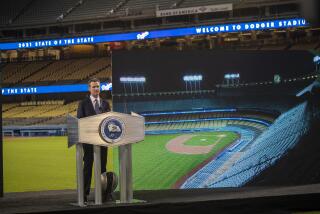California’s capitol — the long view
Fifty years ago, I started covering California’s state Capitol as a twerp reporter — inspired by the grandeur and history, and a bit intimidated by the mystique of a strange world.
The first day that I attempted to dissect a governor’s budget proposal remains the most harrowing of my career. I had no idea how to interpret the gobbledygook and translate it into readable English.
These days actual budgets aren’t even distributed to the media; only the carefully spun summaries are. Another difference: Budgets mostly were honestly balanced back then. In recent years, they’ve become mostly shams.
I arrived in Sacramento from a UPI sports writing gig in San Francisco. Gov. Pat Brown was in his first term, Jesse “Big Daddy” Unruh was about to be elected speaker, and Ronald Reagan still was hosting “General Electric Theater” on TV.
I only mention all this because the Sacramento Press Club is about to honor me for survival, although some might say it’s a citation for over-parking.
Not all the half-century has been spent in Sacramento. There were stints with The Times in Los Angeles as a political writer and editor, and in Washington covering the Reagan White House. But I’ve seen more of California’s Capitol than anyone probably should without jeopardizing sanity.
People often ask, “How have things changed?” So right here I’m going to tell you, as if I already hadn’t a zillion times.
This is a summary of the major game-changers:
• One person, one vote. That was the U.S. Supreme Court decision that forbade state legislatures from using the federal system: one house based on population, a second on geography, which had worked well in California. The ruling sent many skilled rural senators packing in 1966. We’ve never recouped and now have two essentially similar houses.
• Full-time Legislature. Voters agreed in 1966 to professionalize the Legislature. It was a good move at the time. But with longer sessions, the lawmakers ultimately lost their sense of urgency.
• Ronald Reagan. His drumbeat that “government is not the solution, government is the problem” promoted anti-government cynicism and paved the way for Proposition 13.
• Proposition 13. The price for reduced residential property taxes was loss of local control to the state and a required two-thirds legislative vote for any tax increase. The practical result today is a lack of badly needed tax reform.
• Political “reform.” Running for governor the first time, Jerry Brown sold us on a plan to end special interest influence in Sacramento. Right. It banned lobbyists from spending more than $10 a month wining and dining legislators. So now they fork out $10,000 for cheap snacks at a campaign fundraiser. This ended a lot of friendly socializing and legislative bonding.
• Term limits. In 1990, disgusted voters — tired of Speaker Willie Brown and offended by Capitol corruption — clamped tight term limits on legislators. Big mistake. Some bums were forced to hit the road. But valuable leaders were booted, too. And promising future leaders never had the time to develop.
The Legislature has become weaker and the moneyed interests stronger. You’d think that governors also would have become stronger, filling the legislative power vacuum. They haven’t. They try to deal, but modern legislators too often lack the courage and skills to compromise.
Some legislators as individuals undoubtedly were more corrupt 40 years ago, especially as part-timers without steady incomes. I recall lobbyists — liquor, oil, racing, insurance — hanging out in the private office of Senate leader Hugh M. Burns (D-Fresno), playing poker and listening as I interviewed him. That would never happen today.
But the entire legislative system has been corrupted by Democrats’ fear of angering labor unions and Republicans’ subservience to a few anti-tax opportunists and entertainers.
“You’re covering a ghost town, increasingly irrelevant to anything except ruining California,” historian Kevin Starr told me. No one has studied the state more than Starr. He’s the author of eight volumes chronicling California’s history and is a former state librarian.
“Politics as a professional activity in Sacramento is dead,” he said. “It’s now amateur night. What we’ve learned is a lesson as old as the philosophy of Aristotle: Politics comes from the center. Without the center, there is no politics. There is just confrontation.”
But let’s go back to 1961.
Many legislators were World War II combat vets who didn’t scare easily. They couldn’t be cowed by some political demagogue. Moreover, Democrats and Republicans had all worn the same uniforms. There was mutual respect.
Today’s politicians — reflecting the people they represent in an increasingly problematic world — seem less sure of themselves and their futures.
Some today claim it was easier for Pat Brown and his Legislature to achieve great deeds because California still was in a postwar boom and our population was half the current size. Wrong. The necessary catalysts were leadership and courage.
Remember this if you think governing was easier back then: Brown and Unruh carried on a years-long, nasty intraparty feud. The civil rights movement divided the nation, including California. Anti-Vietnam War protests rocked politics and the state.
All this led to an increasingly cynical public and, later, a full anti-government revolt during the Watergate scandal.
But after a three-decade slide in Sacramento, I see hope. The budget now can be passed by a majority vote. Independent redistricting and open primaries kick in next year.
One key lesson of the last 50 years: Emphatic voter actions have long-term consequences. They do more than just send angry messages.
More to Read
Sign up for Essential California
The most important California stories and recommendations in your inbox every morning.
You may occasionally receive promotional content from the Los Angeles Times.











